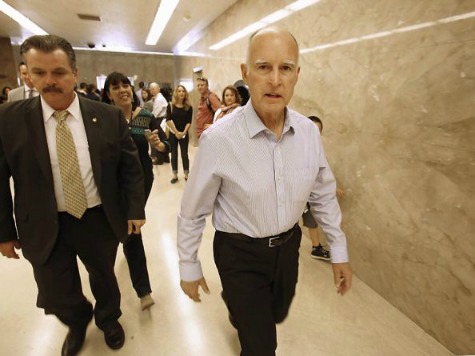The Los Angeles Times reports that despite California Governor Jerry Brown crowing in early 2013, “The prison emergency is over in California,” prison costs have skyrocketed, the prisons are overflowing with criminals, and the overflow has prompted the state to release inmates earlier than scheduled so that federal judges will be satisfied.
Brown boasted in 2010 that he had initiated the “boldest move in criminal justice in decades” by transferring criminals from state prisons into county jails and probation departments. He added that the move eased crowding, cut costs, and increased safety.
But by passing the costs from the state back to the counties, the state is now spending almost $2 billion a year more on incarceration than it did three years ago. The state Finance Department had estimated that realignment would cut prison spending by $1.4 billion this fiscal year and that roughly two-thirds of the $1.4 billion would be returned to the counties.
The counties, now overloaded with 142,000 new felons to deal with, are furious that the state has shoved the costs of the inmates back to the counties. But Brown has ignored the counties’ complaints, stating in April, “I’ve been around to ten counties and I’ve talked to District Attorneys. I’ve talked to police chiefs, I’ve talked to sheriffs. I will continue going to the counties of California. I can report, not just on my say-so, but by the people in the field, probation, mental health, sheriffs who run jails, that realignment is working.”
The “realignment” of prisoners is the latest twist in the decades-old saga of what to do with inmates. The laws had been tightened starting in 1976, during Brown’s first term as governor, when he approved a sentencing law that prescribed fixed terms for most crimes; in 1978, he approved a mandatory parole law that called for prisoners to be supervised for three years after they left jail, amending the previous requirement of just one year.
In 1994, voters passed the “Three Strikes and You’re Out” initiative, which doubled the time in jail for second offenders and required that a third felony conviction triggered life in prison.
The mandatory three-year parole period increased the number of inmates so much that by 2006 two-thirds of prison admissions derived from the requirement.
The prison population grew from 34,000 state prisoners in 1983 to 173,000 in 2006. In 2009, federal judges asserted that the state’s overcrowded prison system violated inmates’ civil rights and required the number of prisoners in the state jails to be limited to 110,000.
Brown reacted in 2011 by creating a new kind of criminal: the non-serious, non-violent, non-sex-offender felon. This kind of criminal would go straight to county probation when they left the state prisons, then only be supervised for six months instead of three years. If the criminal committed a new crime, they would be sent to county jail rather than back to state prison. The same would hold true for parole violators. Diane Cummins, Brown’s special advisor on realignment, blithely said, “You have to take care of your own,” the Times recalls.
But even with Brown’s shifting of responsibility back to the counties, the state’s prison population, which had fallen from 162,400 to 133,000, is growing. The number of inmates in state jails has risen to 135,400; it is predicted to rise to 147,000 in 2019. From October 2011 to June 2013, the number of inmates released from California jails rose to 45,000.
Assistant Sheriff Terri McDonald of Los Angeles County said there could be as many as 4,300 criminals walking the streets freely every day, according to the Times.

COMMENTS
Please let us know if you're having issues with commenting.